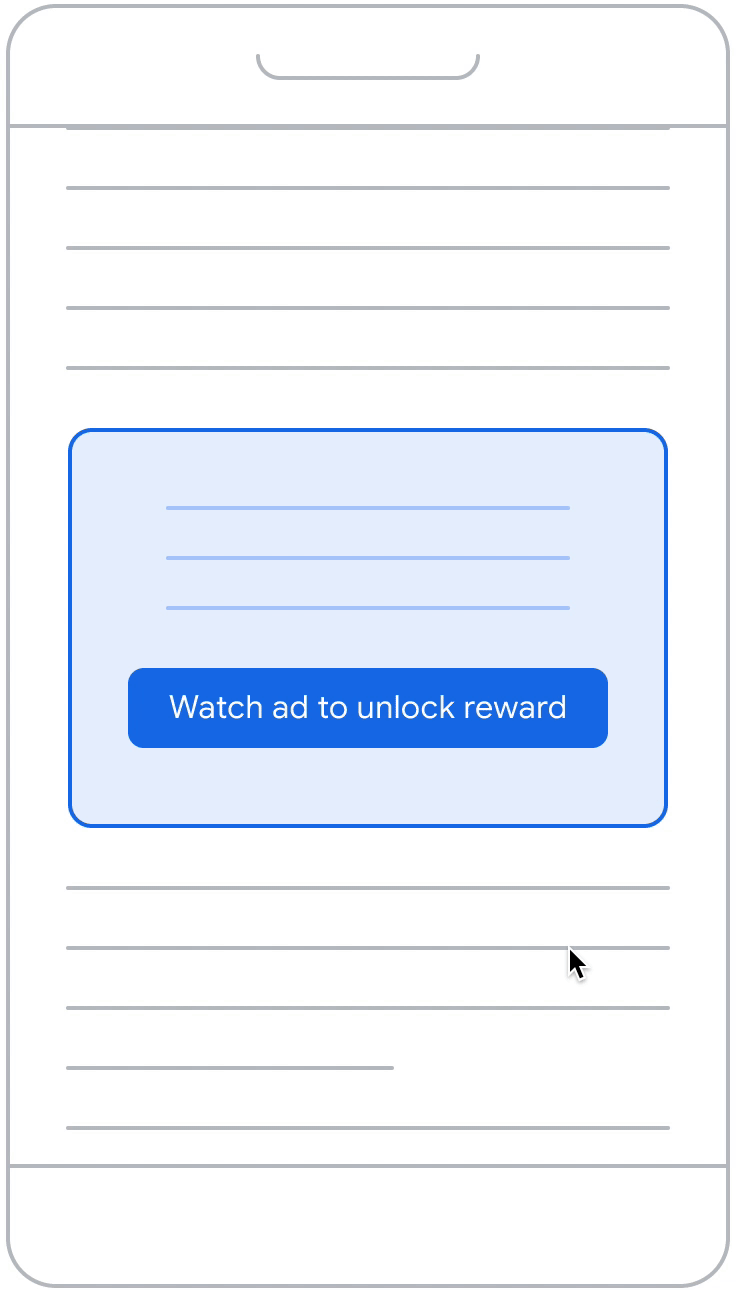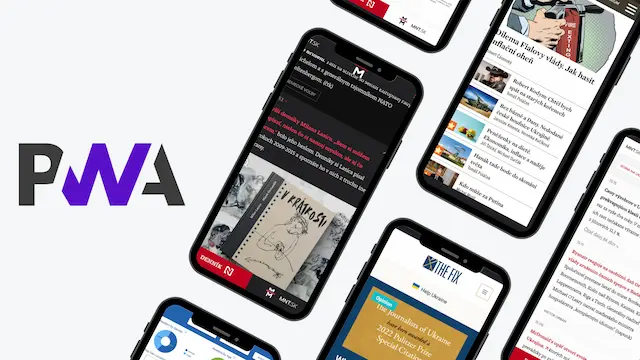Boost your website revenue without deterring users, even at low fill rates.
✨ Listen to the audio version (voiced by AI)
Follow The FatChilli Playbook podcast on Spotify or Apple Podcasts for more insights.
Key insights
- Rewarded ads can yield high CPMs (over €30/$35) for publishers, even with low fill rates.
- This ad format, where users watch ads for a reward, boosts engagement and offers a good paywall alternative.
- FatChilli’s experience shows positive results, with high CPMs and click-through rates, and indicates that well-implemented rewarded ads do not harm traffic or session duration.
- Contact us at [email protected]for more information.
Publishers seeking to monetize their content often grapple with audience access vs. reward, and that’s reward both on the side of revenue, but also for the reader.
Recently, Billy Aldea-Martinez, a Global Director at Piano, reminded us that according to McKinsey, less than 5% of digital audiences generate more than 60% of reader revenue. This leaves 95% ready to be monetized differently or none at all, which doesn’t seem to be a winning or sustainable proposition.
Luckily, there is a middle ground – rewarded ads. An advertising format that was developed for games, it is heavily used in gaming, but not only in games anymore.
Overall, advertising revenue in non-gaming apps is growing, with advertising monetization revenue in entertainment apps nearly tripling.
Rewarded ads for web were introduced by Google not even two years ago as a new format, and came out of beta not long ago. The first results have been extraordinary, and the format keeps evolving and delivering high CPMs for publishers.
According to our market experience and data, local publishers from Europe using FatChilli’s rewarded ad configuration are achieving CPMs exceeding €30 (or $35) – a figure widely regarded as exceptionally high in the advertising industry, signalling extraordinary potential.
Similar results are observed in other regions globally. Still, it is worth taking some notes from the gaming industry regarding the effectiveness of this ad format and favorability among audiences.
Read this case study
Rewarded ads integrated well drive engagement and keep audiences interested
Chris Bailes, head of EMEA sales at Activision Blizzard Media which is the gateway for brands to the biggest cross-platform gaming company in the western world, told The Drum that “by strategically integrating ads in ways that align with the gameplay experience, such as offering opt-in rewards and playable ad formats, game publishers can drive meaningful brand engagement while maintaining an authentic gameplay experience.”
In other words, by creating an offering where the ad becomes complementary to the overall experience, the audience doesn’t get alienated. It is a rare win-win for all parties involved. The audience doesn’t need to pay, the brand or other advertiser gets the ad message across reliably, and the publisher gets paid fairly for the content.
In data gathered by FatChilli from our publishers, we have seen not only high CPMs, which is an important metric for the business, but also very high click-through rates in double digits. Rewarded ads are especially favored by publishers that run websites without a reader revenue, meaning subscriptions, donations, or memberships.
It is also important to note that fill rates are lower, up to 30 percent, but because of the high CPM rates, even smaller publishers are able to monetize their audiences without the need to churn out tons of content. Rather, focus on the experience and the value delivered after the audience is able to access the reward.
What is rewarded advertising and why does it work?
Rewarded advertising operates on a value exchange principle. A user is offered the opportunity to voluntarily watch a short advertisement, often a video, in exchange for a specific reward – access to premium content, unlocking a feature, or another benefit.
This “opt-in” approach ensures that viewers watch the ad with greater attention and interest because they directly benefit from viewing it. This leads to a higher quality of interaction. For advertisers, this means better ad visibility, often 100% for a full-screen video that cannot be skipped, leading to a willingness to pay significantly more for such impressions.
Rewarded video ads are noted as offering some of the highest eCPMs among all video ad formats (this is generally known in the industry and supported by the high CPM numbers mentioned).

Exploring the diverse use cases for rewarded ads on the web
Rewarded advertising offers a flexible and effective monetization strategy for web publishers, extending beyond simple ad placements.
By requiring users to watch a brief ad in exchange for access to specific content or features, publishers can generate significant revenue, often without resorting to traditional paywalls that can deter visitors.
Here are several compelling use cases demonstrating the versatility of this model:
1) Unlocking specific content sections
For websites offering detailed information like recipes, guides, or databases, rewarded ads can gate specific, high-value sections.
For instance, a recipe site could display the dish’s name, description, and photo freely, but require users to watch an ad to view the ingredient list or detailed cooking instructions.
This provides a fair exchange – the user gets the essential information they need after a brief ad view, and the publisher monetizes valuable content without frustrating users upfront.
This can also apply to unlocking video tutorials.
2) Gating access to related content
Publishers can leverage “recommended” or “similar articles” sections as a monetization point. When a user finishes an article and clicks on a suggested related piece, they can be prompted to watch a rewarded ad to proceed.
This encourages deeper engagement and longer sessions on the site while turning internal traffic flow into a revenue opportunity. It’s particularly effective for content series, in-depth topic explorations, or accessing bonus or archived material.
3) Monetizing article conclusions
Instead of hiding entire articles behind a paywall, publishers can allow readers access to the majority of the content but “lock” the final crucial part, such as the conclusion, key findings, the answer to a question posed earlier, or the punchline.
A user invested in the article is often willing to watch a short ad to unlock the remaining valuable information, providing a revenue stream without blocking initial engagement.
This works particularly well for journalistic pieces, interviews, tutorials, or any content where the ending holds significant value.
4) Providing site-wide or section access
Rewarded ads can function as a ‘temporary pass’ or ‘entry ticket’ to premium areas or even the entire website, serving as an alternative to paid subscriptions. A user might watch an ad once per day or session to gain unlimited access for that period.
This model caters to users who are hesitant to commit to a subscription but are willing to exchange a moment of their attention for access to valuable content, making it suitable for premium magazines, specialized blogs, or sites with exclusive member sections.
5) Monetizing tools and functionalities
Websites offering practical tools like PDF converters, calculators (mortgage, tax, calorie), data export features, or other online utilities can implement rewarded ads effectively.
Before the user can complete their desired action – convert the file, see the calculation result, download the data – they are prompted to watch an ad.
This provides a clear value exchange: the user gets the functionality they need for free, funded by their attention to the ad, allowing publishers to monetize useful tools without charging direct fees or requiring registration.
By creatively implementing rewarded ads across these different scenarios, publishers can tap into new revenue streams, enhance user engagement when done correctly, and offer valuable content and tools in a way that feels like a fair exchange for the user.
Using rewarded ads doesn’t decrease traffic or time spent. Implementation is simpler than it looks
Publisher using a rewarded ad unlock, where the user can see a blurred-out version of the content.
Even with a low fill rate (e.g., below 5%), some websites can generate significant revenue, as some of the publishers in our network have shown by earning tens of thousands of euros with a single-digit fill rate.
This highlights that it is about the quality of engagement and advertisers’ willingness to pay high prices for a targeted and engaged audience that chooses to watch the ad voluntarily, not about mass impressions.
What to do with the rest of the ad space? Publishers in our network use this opportunity to advertise other products or services. If you don’t have a video you want to run, you can also include static images.
While rewarded advertising originated in mobile games, publishers with other types of content, including lifestyle magazines and file conversion platforms, have quickly adopted its potential.
Some publishers may worry that rewarded advertising is too “aggressive” or will deter users, thereby reducing subsequent impressions on the page.
However, our extensive testing has shown that if the rewarded unit is set up and implemented correctly (e.g., with appropriate informational text for the user before the ad) and if it is displayed in only a minority of cases at high CPMs, it does not decrease traffic. On the contrary, audiences who are by far not willing to pay for content access are willing to watch an ad for a few seconds.
Our data has even shown a positive impact on session duration and the number of pages viewed. Publishers are advised to test different placements and ad frequencies to find the optimal balance.
Implementation is often simpler than it seems, and the right technical support can ensure quick deployment. The FatChilli team has served multiple clients with rewarded ads, many of them with a custom approach, and we are happy to do it also for you.
Overall, it is a win-win format, where the user gains value, and the publisher gains revenue.
We are running more experiments and will be sharing updates and data from the tests. Subscribe to our newsletter to get them first. Follow us on LinkedIn.
Enjoyed the post? Share it.
A performance-driven strategist passionate about data-powered advertising solutions.












